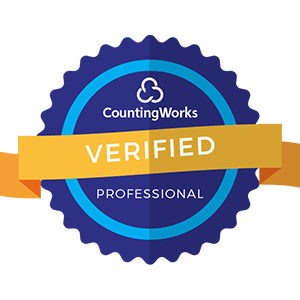
Companies are constantly seeking ways to gain a competitive edge. While many organizations focus on product innovation, marketing strategies, and financial optimization, there is one crucial factor that often goes overlooked: people strategy. Leveraging talent effectively can be the key to unlocking business growth and creating a sustainable competitive advantage.
In this article, we will explore the concept of people strategy as a competitive advantage and provide actionable insights on how to harness the power of your human capital to drive business success. By the end of this article, you will have a deep understanding of why investing in your people is not just a nice-to-have, but a must-have for any organization looking to thrive in today's market.
Before we dive into the ways in which people strategy can be leveraged for business growth, it's essential to have a clear understanding of what people strategy entails. People strategy is a comprehensive approach to managing and developing an organization's human capital to align with its overall business objectives. It encompasses various aspects, including:
A well-crafted people strategy takes into account the unique needs and goals of the organization while focusing on creating an environment that enables employees to thrive and contribute to the company's success.

Many organizations view their people as a cost center rather than a strategic asset. However, research has consistently shown that investing in human capital can yield significant returns for businesses. Here are some compelling reasons why people strategy should be a top priority:
Engaged employees are more productive, innovative, and committed to their work. A study by Gallup found that companies with highly engaged employees experienced 21% higher profitability and 41% lower absenteeism compared to those with low engagement levels.
High employee turnover can be a significant drain on a company's resources. The cost of replacing an employee can range from 50% to 200% of their annual salary, depending on the role and level of expertise. By focusing on employee retention through effective people strategies, organizations can minimize these costs and maintain a stable workforce.
Happy employees lead to happy customers. When employees feel valued and supported by their organization, they are more likely to provide exceptional customer service. A study by PwC found that companies with highly engaged employees had 89% greater customer satisfaction and 50% higher customer loyalty than those with disengaged employees.
In today's rapidly changing business environment, organizations need to be agile and innovative to stay ahead of the competition. By fostering a culture of continuous learning and empowering employees to take ownership of their work, companies can tap into the collective intelligence of their workforce and drive innovation.
Now that we've established the importance of people strategy, let's explore the key components that make up an effective approach to leveraging talent for business growth.
Attracting and hiring the right talent is the foundation of any successful people strategy. Organizations should focus on developing a strong employer brand, leveraging diverse recruitment channels, and implementing structured interview processes to identify candidates who align with the company's values and culture.
Investing in the growth and development of employees is crucial for retaining top talent and building a pipeline of future leaders. This includes providing ongoing training opportunities, mentoring programs, and career development paths that enable employees to acquire new skills and take on greater responsibilities.
Effective performance management goes beyond annual reviews and focuses on continuous feedback, goal setting, and coaching. By creating a culture of open communication and accountability, organizations can ensure that employees are aligned with business objectives and are consistently delivering high-quality work.
Engaged employees are more productive, motivated, and likely to stay with the organization long-term. To foster engagement, companies should prioritize regular communication, recognition and rewards, work-life balance initiatives, and opportunities for employees to have a voice in decision-making processes.
Building a diverse and inclusive workplace is not only a moral imperative but also a business necessity. Companies that prioritize DEI initiatives have been shown to have higher levels of innovation, employee engagement, and financial performance. Effective people strategies should include measures to promote diversity in hiring, create inclusive work environments, and address systemic barriers to equity.

To ensure that people strategy is driving business growth, it's essential to establish metrics and key performance indicators (KPIs) to measure its impact. Some important metrics to consider include:
By regularly tracking and analyzing these metrics, organizations can identify areas for improvement and make data-driven decisions to optimize their people strategy.
In today's competitive business landscape, people strategy is no longer a nice-to-have but a critical component of organizational success. By leveraging talent effectively, companies can drive innovation, improve customer satisfaction, and achieve sustainable growth. The key is to develop a comprehensive people strategy that aligns with business objectives, invests in employee development, fosters engagement and inclusion, and measures impact through meaningful metrics.
For organizations looking to unlock the power of people strategy, the path forward is clear. It starts with recognizing the value of human capital and making a commitment to invest in the growth and well-being of employees. By developing a comprehensive people strategy that encompasses talent acquisition, development, engagement, and inclusion, companies can create a culture that attracts and retains top talent, drives innovation, and ultimately fuels business success.
In a world where change is constant and competition is fierce, the organizations that prioritize their people will be the ones that thrive. By leveraging talent as a competitive advantage, companies can not only survive but also lead the way in their industries. The power of people strategy is waiting to be unlocked – it's up to forward-thinking organizations to seize the opportunity and invest in their most valuable asset: their people.


